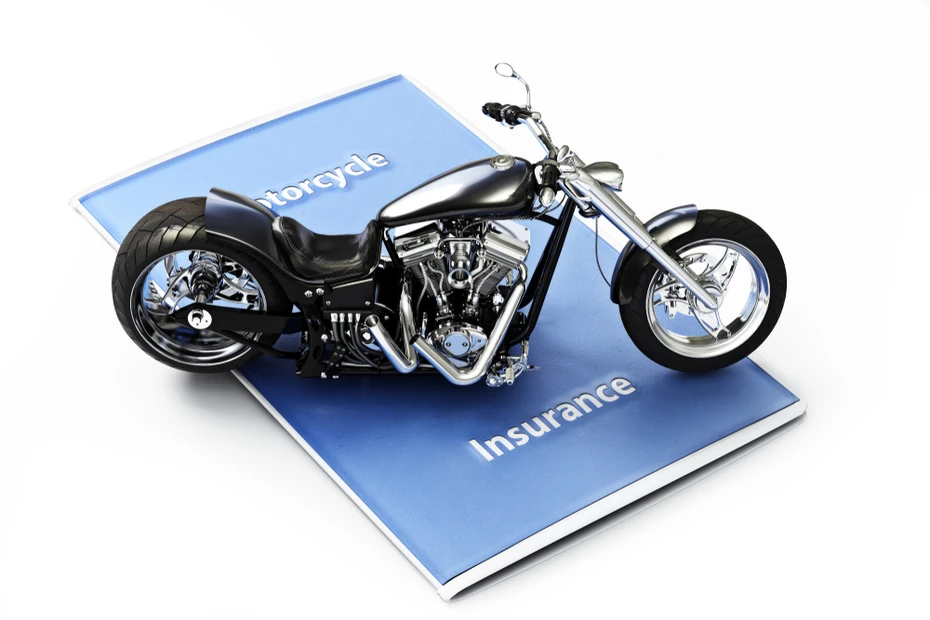Bike Depreciation Rate in Insurance: How It Affects Your Premium & Claims
How Depreciation Affect The Cost of Bike Insurance?
Owning a bike is not just about convenience; it’s a statement, a lifestyle choice. However, like any other asset, a bike too loses its value over time, which is crucial when claiming insurance. In this guide, we explain the concept of depreciation in bike insurance.
Table of Contents
- What is the Bike Depreciation Rate?
- Understanding motorbike depreciation rate:
- Significance of motorcycle depreciation rate in Bike Insurance:
- What is the Rate of Depreciation on Your Bike?
- What is a Zero Depreciation Cover in Bikes?
- Benefits of Zero Depreciation Cover
- What is Not Covered Under Bumper-to-Bumper Cover?
- What is a Bike Depreciation Rate Calculator?
- Who Should Buy a Zero Depreciation Cover for a Bike?
- Final Thoughts
- FAQs
What is the Bike Depreciation Rate?
The two-wheeler depreciation rate is a representation of the reduction in the value of your bike as it ages, incurs wear and tear, or gets damaged. Depreciation plays a significant role in determining the amount you will receive from your insurer in the event of a claim.
Understanding Motorbike Depreciation rate:
- Fixed Asset: A bike is considered a fixed asset. As soon as it hits the road, its market value starts decreasing due to factors like wear and tear, ageing, and the release of newer models.
- Rate of Decline: The depreciation rate of a bike is the percentage reduction in its value each year. The steeper this rate, the lower the Insured Declared Value (IDV) of your bike will be when you make a claim.
- Insured Declared Value (IDV): IDV is the maximum sum assured provided by your insurer in case of theft or total loss of your bike. It's calculated by deducting the depreciation rate from the manufacturer's listed selling price.

Significance of motorcycle depreciation rate in Bike Insurance:
- Claim Amount: The depreciation rate directly influences the claim amount. The insurer uses it to calculate the IDV, which is essentially the current market value of your bike. In cases of theft or total loss, the insurer will compensate you based on the IDV.
- Premium Rates: Your bike's depreciation also affects the premium rates of your insurance policy. As the value of your bike decreases, the premium for insurance like comprehensive and collision coverage may also reduce.
What is the Rate of Depreciation on Your Bike?
Understanding the rate of depreciation is crucial for every bike owner as it affects the insurance claim amount. The depreciation rate varies depending on the age of the bike and the materials used in the various bike parts.
Depreciation According to Bike Age:
The depreciation rate increases as your bike gets older. Here's a table illustrating the depreciation rates according to the age of the bike:
|
Bike Age |
Depreciation Rate |
|
Less than 6 months |
5% |
|
6 months to 1 year |
15% |
|
1 year to 2 years |
20% |
|
2 years to 3 years |
30% |
|
3 years to 4 years |
40% |
|
4 years to 5 years |
50% |
|
More than 5 years |
To be decided by the insurer based on the bike's condition |
Depreciation According to Bike Parts:
Different bike parts have different depreciation rates due to the variance in their wear and tear. Below is a table demonstrating the depreciation rates for various bike components:
|
Bike Part |
Depreciation Rate |
|
Rubber/nylon/plastic parts |
50% |
|
Fibreglass components |
30% |
|
Paintwork |
50% |
|
Metal parts |
As per the age-wise depreciation rate |
It’s imperative for bike owners to comprehend these rates as they directly impact the claim settlement amount. Knowing these aspects allows you to understand how much you can expect from your insurer in case of a claim, enabling you to make an informed decision when selecting or renewing your bike insurance policy.
How Does Depreciation Affect the Insurance Premium Price
Bike insurance premium rates are decided based on IDV (Insured Declared Value) which is the final amount paid to a policyholder whenever they file an insurance claim. With every passing year from the year of purchase, a bike’s market value decreases. This is called depreciation. Every year, the IDV is re-calculated based on the depreciation in the bike’s market value. As years progress, and the bike becomes older, its market value and IDV also go down, thus causing the bike insurance premium to plummet. Simply put, as your bike gets older, its IDV also decreases due to depreciation, thus bringing down the insurance premium cost.
What is a Zero Depreciation Cover in Bikes?
A Zero Depreciation Cover, often referred to as 'zero dep' policy, is an add-on cover that can be attached to your base comprehensive bike insurance policy. This additional cover nullifies the effect of depreciation on the value of your bike, ensuring that you receive the full claim amount without any deductions for depreciation. Typically, under standard bike insurance, the claim amount is often lower than the repair costs due to depreciation deductions.
With a zero depreciation policy, your insurer pays the entire cost for the replacement or repair of damaged bike parts, barring a few exceptions like tyres and batteries (usually covered at 50%). This cover is particularly beneficial for high-end bikes where the cost of spare parts is expensive.
Benefits of Zero Depreciation Cover
- Full Claim Amount: With a zero depreciation cover, you receive the full claim amount as the insurer doesn’t account for depreciation. This leads to higher claim settlements, easing your financial burden during repairs.
- Peace of Mind: Knowing that depreciation won’t affect your claim amount provides peace of mind. It is especially relieving in case of significant damages where repair costs could be substantial.
- Cost Savings: Though zero depreciation cover comes with a higher premium, it offers significant savings in the event of a claim, covering expensive parts without considering their depreciated values.
- Optimal for New Riders: New or inexperienced riders can significantly benefit from zero depreciation cover as it provides comprehensive financial protection against accidental damages.
- Ease in Replacement: If your bike parts need replacement after an accident, a zero depreciation cover ensures that you receive the full cost, facilitating a hassle-free replacement process.
By investing in a zero depreciation cover, bike owners safeguard themselves from the financial implications of depreciation, making it a wise choice for those looking for extensive coverage. This is particularly prudent for new bikes and for riders residing in accident-prone areas where the probability of filing a claim is higher.
What is Not Covered Under Bumper-to-Bumper Cover?
While zero depreciation cover offers extensive protection, it doesn’t cover every aspect related to your bike. Understanding the exclusions is crucial to avoid misunderstandings at the time of claim settlement. Below are the typical exclusions under zero depreciation cover:
- Mechanical Breakdowns: Any damages that occur due to mechanical or electrical breakdowns, wear and tear, or general ageing of the bike are not covered.
- Tyres and Tubes: Zero depreciation cover usually doesn't provide 100% coverage for tyres and tubes. If they are damaged, the policy may cover 50% of the replacement cost, though this varies between insurers.
- Unprotected Bike Parts: Some parts that are not crucial to the bike’s functioning might not be covered, like accessories unless covered under a separate add-on.
- Policy Deductibles: The compulsory deductible or voluntary deductible chosen at the time of policy inception must be paid by the policyholder at the time of claim.
- Intentional Damage: Damages inflicted intentionally or due to negligence, like driving under the influence, are not covered.
- Expired Policy: If the bike insurance policy has expired or is not active, the zero depreciation cover cannot be availed.
What is a Bike Depreciation Rate Calculator?
A bike depreciation rate calculator is an online tool designed to help bike owners understand the current market value of their vehicles. This tool is particularly useful when buying or selling a used bike or when claiming insurance. It calculates the bike's depreciation rate based on factors like its age, model, brand, and overall condition. Here’s how it generally works:
- Input Details: Enter your bike's essential details, such as make, model, year of purchase, and kilometres driven.
- Select Condition: Choose the bike’s current condition from the options provided, ranging from excellent to poor.
- Calculation: The calculator uses a predetermined depreciation rate (as per the insurer's or industry's standards) to estimate the bike’s current market value.
These calculators are often available on insurance company websites, automobile valuation platforms, and used vehicle sales portals. They provide a quick and easy way for owners to understand their bikes’ worth and make informed decisions regarding sale, purchase, or insurance claims.
Keep in mind that different insurers and platforms might use slightly varying criteria for their calculators, so it’s advisable to use these tools as rough estimates rather than absolute values. Always consult with your insurer or a professional valuator for the most accurate assessment.
Who Should Buy a Zero Depreciation Cover for a Bike?
A zero depreciation cover is beneficial for various bike owners for different reasons:
- New Bike Owners: Those who've recently purchased a new bike should consider this cover as it helps retain the bike's maximum value.
- Inexperienced Riders: Novice or inexperienced riders are at a higher risk of getting into accidents, making this cover a prudent choice to mitigate high repair costs.
- Luxury and Premium Bike Owners: Repairs and replacement parts for high-end bikes are expensive. Zero depreciation cover significantly lowers out-of-pocket expenses in case of damage.
- Residents of Accident-Prone Areas: If you live or frequently ride in areas where the risk of accidents is higher, investing in this cover can be financially wise.
- Owners of Bikes with Expensive Spare Parts: Bikes whose spare parts are costly to replace can benefit from this add-on as it covers the cost of new parts without factoring in depreciation.
Final Thoughts
Understanding bike depreciation is crucial when dealing with bike insurance. The depreciation rate affects the Insured Declared Value (IDV) of your bike, which in turn influences the premium and the claim amount. Opting for a zero depreciation cover can be a sound investment, as it negates the effects of depreciation, ensuring that you receive the maximum claim amount in case of damages. This add-on is particularly beneficial for new, inexperienced, or luxury bike owners who wish to safeguard themselves against the financial implications of depreciation. Like all insurance decisions, assess your needs, risks, and the cost-benefit aspect before opting for zero depreciation cover or any other add-on.
FAQs
- What does the bike depreciation rate refer to?
- Answer: Bike depreciation rate refers to the reduction in the value of the bike. This happens over time due to wear and tear, ageing, and other factors.
- How is the bike depreciation rate calculated?
- Answer: The depreciation rate is calculated based on the bike’s age. It starts from 5% for the first six months and can go up to 50% for bikes over five years old.
- What is a zero depreciation cover?
- Answer: A zero depreciation cover, or bumper-to-bumper cover, ensures that in case of repairs, the policyholder gets full compensation without accounting for depreciation.
- Is zero depreciation cover worth it?
- Answer: It's beneficial for new bike owners, inexperienced riders, those owning luxury bikes, or those residing in accident-prone areas as it offers comprehensive coverage without considering depreciation.
- What is not covered under zero depreciation cover?
- Answer: Mechanical breakdown, wear and tear, and uninsured items like bi-fuel kits, tyres, and consumables are not covered under zero depreciation cover.
- Who should consider buying zero depreciation cover?
- Answer: Owners of new bikes, luxury bikes, inexperienced riders, or those living in high-risk areas should consider buying zero depreciation cover.
- How does depreciation affect my bike insurance premium?
- Answer: The depreciation rate influences the Insured Declared Value (IDV) of your bike, which directly affects your insurance premium and claim amount.
- Can I add zero depreciation cover to my existing bike insurance policy?
- Answer: Yes, you can add a zero depreciation cover at the time of renewing your existing policy.
- How often can I claim zero depreciation cover?
- Answer: The number of zero depreciation claims allowed in a policy year varies with insurers, so it’s essential to check the specific terms and conditions.
- Do all insurers offer zero depreciation cover for bikes?
- Answer: Most insurers offer zero depreciation covers, but the availability might vary. It is advisable to check and confirm with your insurance provider.














































